FreeNAS Mini XL+ Performance
We are going to look at three key areas of performance for the FreeNAS Mini XL+. First, we are going to look at CPU performance. Then we are going to look at storage performance. Finally, we are going to look at network performance.
FreeNAS Mini XL+ CPU Performance
Our standard Linux-Bench suite runs under Linux, not FreeBSD. Luckily, it was trivial to boot to Ubuntu 18.04 LTS and run our CPU benchmarks on the FreeNAS Mini XL+. We wanted to show a few quick views of what the CPU performance is relative to other server options. A key selling point of the FreeNAS Mini XL+ is that it has extra CPU and memory capacity so you can run additional virtual machines, jailed applications, and Docker containers on the system. Here is the lscpu output of the Intel Atom C3758:
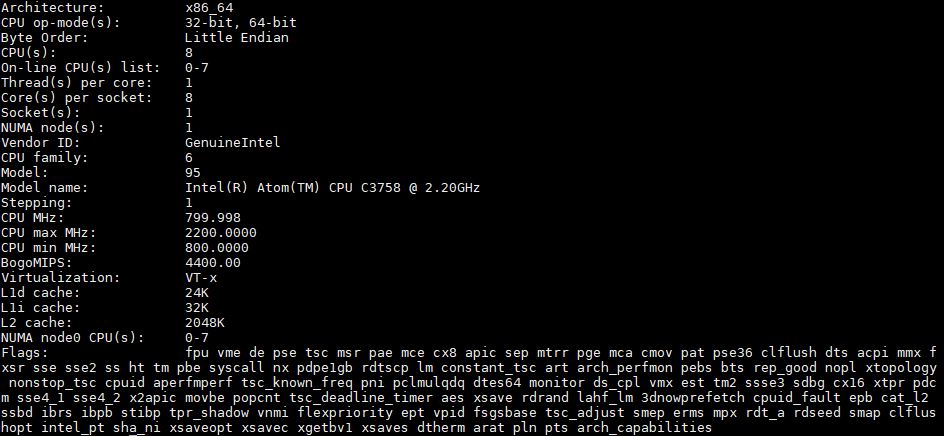
We are going to do an abridged set of benchmarks, but you can see our full Intel Atom C3758 Benchmarks and Review for more.
Python Linux 4.4.2 Kernel Compile Benchmark
This is one of the most requested benchmarks for STH over the past few years. The task was simple, we have a standard configuration file, the Linux 4.4.2 kernel from kernel.org, and make the standard auto-generated configuration utilizing every thread in the system. We are expressing results in terms of compiles per hour to make the results easier to read:
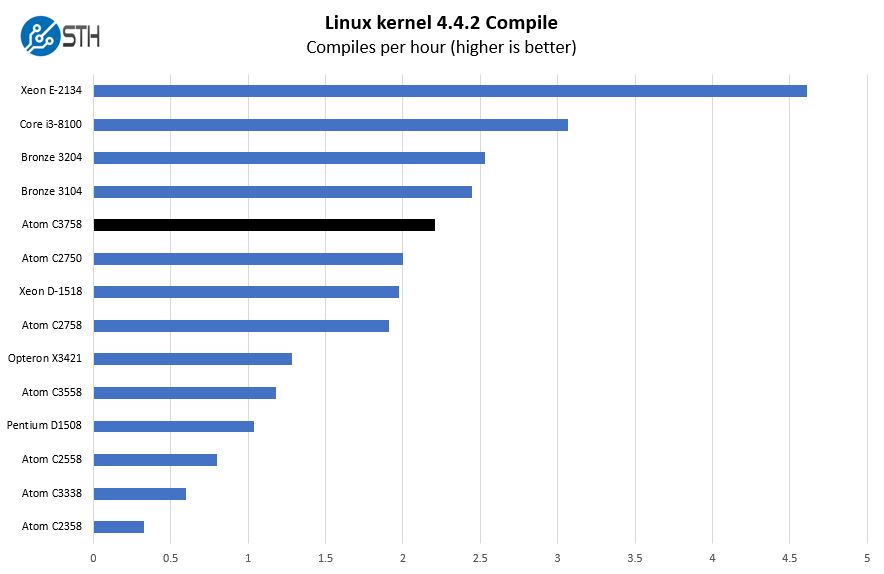
There are parts of this benchmark that are single-threaded. Still, if you are buying lower-spec servers for edge virtualization/ container hosts, the Atom C3758 has fairly solid performance nearing that of much higher power alternatives such as the Intel Xeon Bronze 3204.
7-zip Compression Performance
7-zip is a widely used compression/ decompression program that works cross-platform. We started using the program during our early days with Windows testing. It is now part of Linux-Bench.
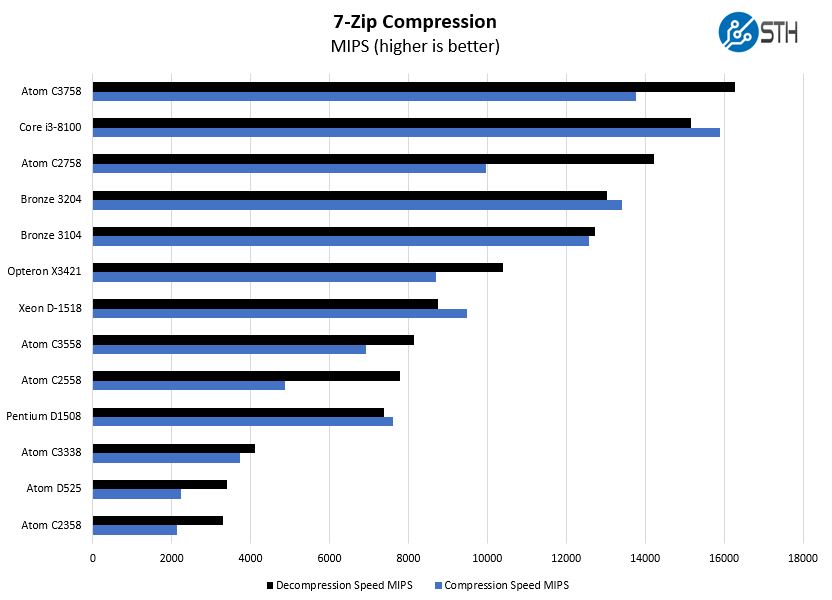
On the compression side, we see great gains. We have the AMD Opteron X3421 here which is the CPU from the higher-end HPE ProLiant Microserver Gen10. As you can see, the FreeNAS Mini XL+ has 10GbE, a faster CPU, more memory and storage capacity, and out-of-band management. The FreeNAS Mini XL+ is more of a low-spec HPE ProLiant ML110 Gen10 competitor but is smaller and lower power.
OpenSSL Performance
OpenSSL is widely used to secure communications between servers. This is an important protocol in many server stacks. We first look at our sign tests:
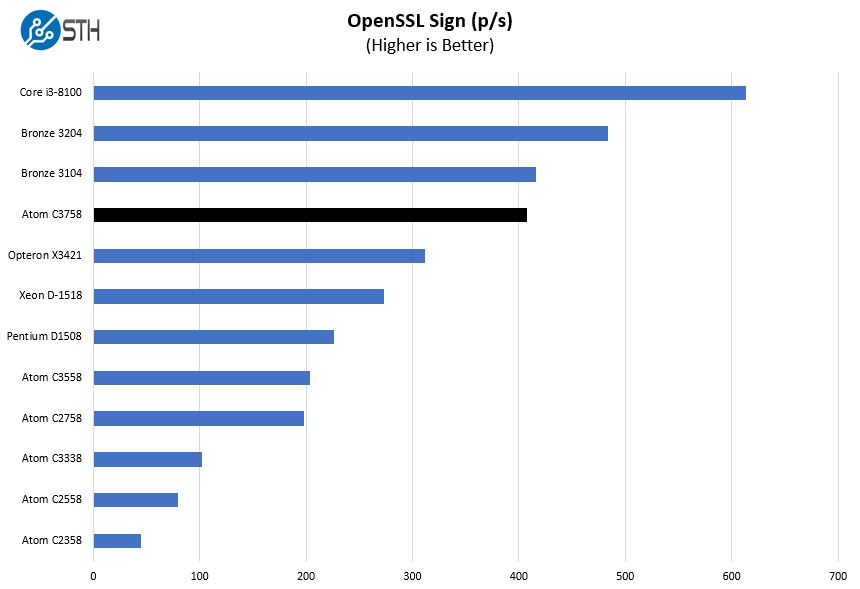
Here are the verify results:
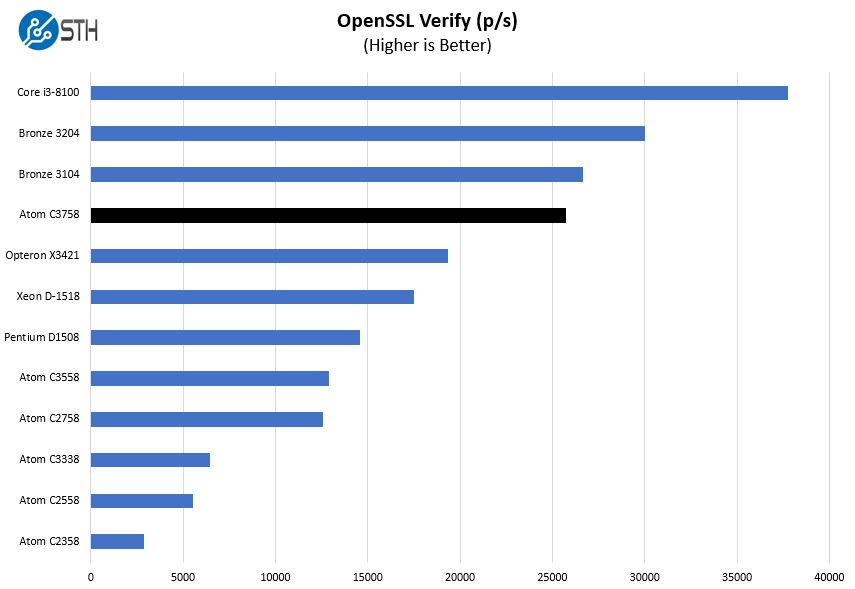
We have the Intel Pentium D1508 and Xeon D-1518 on here as they can be common “higher-end” consumer NAS options. As you can see, the Intel Atom C3758 has substantially more performance.
UnixBench Dhrystone 2 Benchmarks
Some of the longest-running tests at STH are the venerable UnixBench 5.1.3 Dhrystone 2 results. They are certainly aging, however, we constantly get requests for them, and many angry notes when we leave them out. UnixBench is widely used so we are including it in this data set. Here are the Dhrystone 2 results:
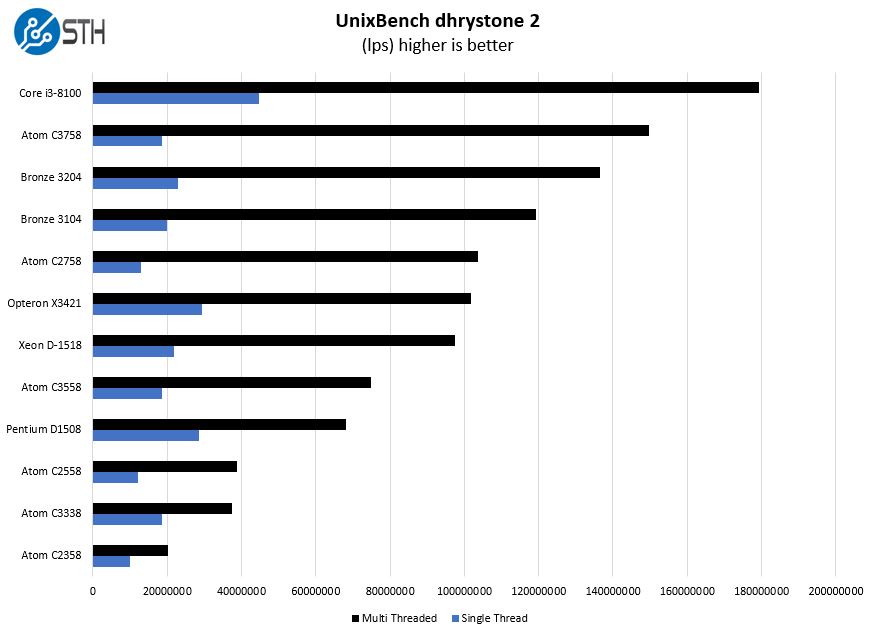
Single-threaded performance may not be the best, but with eight-cores, the net impact of an Atom C3758 can be significant. Just because it says “Atom” does not mean it is necessarily slower than everything that is called a “Xeon” but it uses less power to achieve the same multi-threaded performance.
We wanted to give some sense of the overall compute performance as a big part of the FreeNAS Mini XL+ is the ability to run applications at the edge.
FreeNAS Mini XL+ Storage Performance
We wanted to take a few views of the storage performance since this is a NAS platform. At the same time, with eight modern hard drives, lots of RAM, and 10GbE networking, this configuration has more performance for the majority of sequential workloads than most deployments will need. We also wanted to look at the sync write performance of the ZIL Write Cache SSD option our unit came equipped with.
Intel NAS Performance Toolkit
The Intel NAS Performance Toolkit (Intel NASPT) is a file system exerciser and analysis tool designed to enable performance comparisons between network-attached storage (NAS) devices. It tests several common workloads. You can take these results and compare against many of our other consumer NAS reviews.
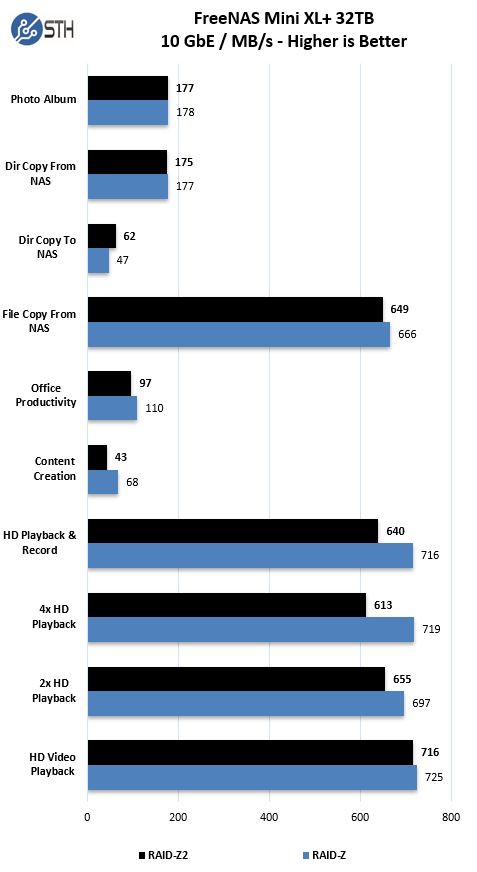
Overall great results and generally ahead of most of the consumer NAS devices we test by a double-digit margin.
FreeNAS ZIL Write Cache SSD Testing
Here we are again using the FreeBSD diskinfo tool to simulate the type of activity patterns one sees with ZFS ZIL/ SLOG devices. Although the industry likes to quote 4K random write numbers, that is not the most relevant. A 100GB drive written continuously at 100% load will fill up quickly. Instead, logging operations often perform some writes, then need to flush data to make room for the next set of data. Here is the raw result for the FreeNAS Mini XL+ Zil:
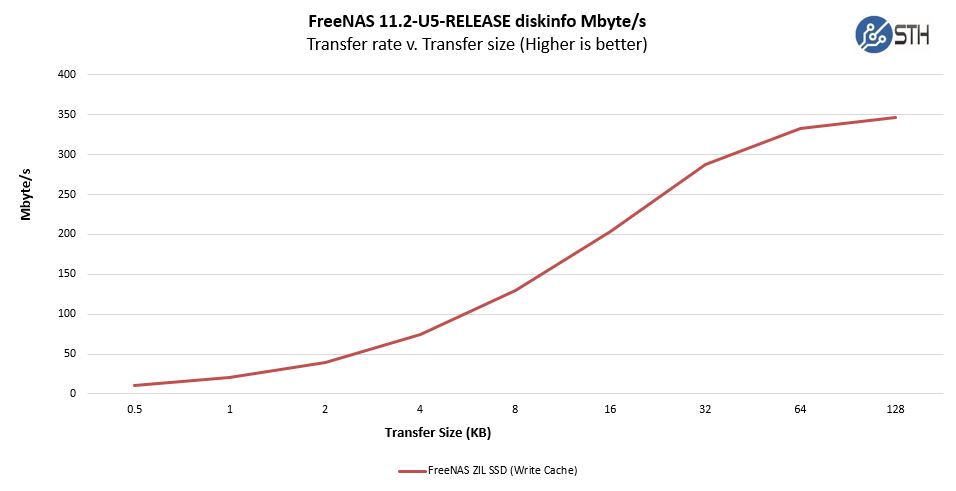
Here are the latency figures:
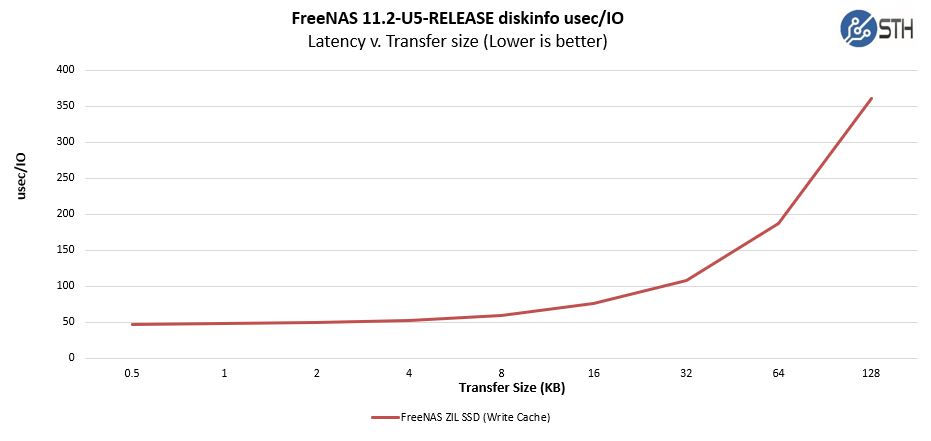
Some time ago, we did a piece around Exploring the Best ZFS ZIL SLOG SSD with Intel Optane and NAND. This is not quite the same performance, but it is still very good. Sync writes are important for applications like writing database data to the NAS. Here the FreeNAS ZIL drive performed relatively well for a SATA III offering.
FreeNAS Mini XL+ Network Performance
The FreeNAS Mini XL+ has two 10Gbase-T Ethernet ports. We tested these both using 10Gbase-T as well as running in 1GbE mode.
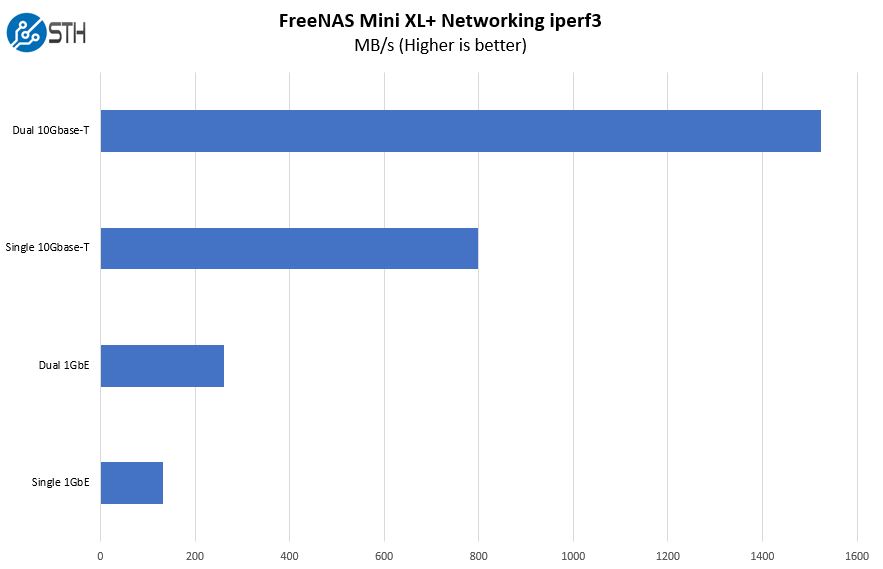
As you can see, we got solid performance from the onboard NICs. We expect slightly better performance using SFP+ networking, but this is fast enough to do 4K video as an example. In 2019, we suggest your NAS units use 10GbE if at all possible.
Next, we are going to look at power consumption and noise before getting to our final thoughts on the FreeNAS Mini XL+.



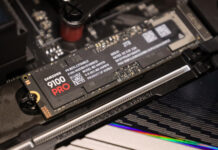
Maybe I missed it, but I didn’t see the RAIDZ-level configuration.
Well-done review! Extraordinarily thorough. I’ve always thought of these as storage only but you’ve got me thinking about replacing some lightweight VM hosts too.
Misha E. they’ve got RAID-Z on pg3. We use freeNAS and the setup part RAID-Z is very close to RAID-Z2 other than one select box.
Thanks, Stanley.
I wish they’d have a Xeon D option too.
Another great STH review. I’d have liked to have seen compatibility testing with (4) 32gb dimms and (4) 64gb dimms.
Why’d you use 4TB drives not 8 or 10TB drives? I mean if you’re going 8-bay instead of 4-bay wouldn’t you want more capacity than a 4-bay offers? 4x10TB=40TB. 8x4TB=32TB. In your RAIDZ2 you’ve got 20TB usable which is RAID10 like and you’d have 30TB in RAIDZ so more than this 8-bay. You’d also save a load on power and noise with helium 10’s instead of air 4’s.
Supermicro needs that dual fan bracket on their CSE 721
Can anyone tell me what HDD model they use? Thanks
Great review. I just placed an order for a low end TrueNAS X20, maybe I should’ve saved some cash and gotten a pair of FreeNAS Mini XL instead :D
What SuperMicro Board is that running, and if someone has a failed existing freenaz with the asrock board, could they replace it, it’s the same size, but would the backplane be the same ?
@Lukas,
no idea; the configuration/order form on iXSystems online shop does not reveal details about the drives they ship. The review here mentions that the 4 TB drives shipped were some WD Red’s. But then again, since the order page does not disclose any particular drive model that is being shipped, iXSystem might at any time decide to ship different drive models from different manufacturers if they deem those different drives fit for purpose, without you knowing about it until the device is being delivered.
Fortunately, if you don’t want to order a “mystery box”, the FreeNAS Mini’s can also be ordered disk-less (without any drives), leaving it to you to buy drives of your choice from your preferred vendor(s)…
Drive temperatures in that chassi?
What was the RAM configuration? Were there empty slots for upgrading or would you have to replace the sticks that come with the unit?
Will there be an in-depth review of the FreeNAS Mini E as well?
@Lukas, the hard drives are 4 TB WD Reds. Hard drive selection is discussed on page 4 of the review.
@Will I’m looking on P1 and it’s 2x16g sticks and there’s 4 slots so 2 slots open.
ZFS has integrated QuickAssist (QAT) acceleration on some platforms. I am unsure if your version of FreeNAS has that capability. I would be highly interested in seeing the performance of the QAT when QAT-capable versions of ZFS are used. Since it accelerates raidz calculations and compression, this could be very valuable at extending the usable SSD capacity, without sacrificing (much) performance.
We have this in our office. It works flawlessly, my only comment is that those 2 front fans ave quite noisy. I wanted to put this NAS on my desk and I ended up moving it to other room just for the noise.
From a maintenance stand point, I’m curious as to how updates and patching is handled.
While this includes the OS, I’m also wondering about the ipmi and how ixsystems gives us a single point of service.
Background: Supermicro has had it’s share of ipmi security issues and I’ve often found them to lack timely patching and short eol windows. (Ivey Bridge servers are still in production environments, I’d expect ipmi patches to be made available).
Does ixsystems take over from Supermicro?
I have a custom build with the same mainboard Supermicro A2SDi-H-TF and 32GB RAM ECC. Boot drive is a mirrored SSD (Sandisk 120GB). 8x WD Red 8 TB in a RAIDZ2 configuration. I use a Samsung 970 EVO Plus 500GB (onboard NVMe M2 slot) as L2ARC cache and still get only 500-600 MB/s read speed. Then i put a second Samsung 970 EVO Plus 500GB (in PCIe 3.0 x4 slot with Lycom DT-120) as ZIL /SLOG cache and only get 400-550 MB/s write speed. So then i tried to use the second Samsung 970 EVO Plus 500GB as a single drive to get the full speed of the NVMe SSD for video editing over LAN. Even as a single NVME SSD drive the read and write speed are limited to 500-600 MB/s.
I use a Mac Pro 4.1 (flashed to 5.1, PCIe 2.0 x4) with a Sonnet 10G-BaseT PCIe card + Netgear XS505M or the SFP+ approach with MikroTik CRS305 + Sonnet 10G SFP+ PCIe card. Always 500-600 MB/s.
With 8 WD Red (5.400 rpm) in RAIDZ2 configuration i was expecting at least 800-900 MB/s read speed and 700-800 MB/s write speed. Adding NVMe SSD as L2ARC and ZIL / SLOG cache did not boost the performance to saturate the 10 GbE connection.
With iperf3 performance test in both direction i get around 9 Gbit/s. For the read and write speed test of SMB, AFP and NFS shares and iSCSI volume i use BlackMagic Speed Test.
If anyone has any suggestions would be nice to hear.
Zoran,
can you get intel optane 900p drive instead of samsung?
Would be better, than samsung.
I have one installed as zil device, perfect, the 10GBE can be fully saturated by smb.
Patrick,
i would like to get this ablecom cs t80 case to upgrade my 4 bay rig. :-)
I think supermicro and ixsystems gets chassis from the same manufacturer, from ablecom.
The 4 bay case of supermicro is exactly same, than 4 bay freenas case of ixsystems.
I am considering purchasing this computer, however, I am looking forward to running TrueNAS Core running on Debian.
Does anyone know if this computer will support a switch to the new software?